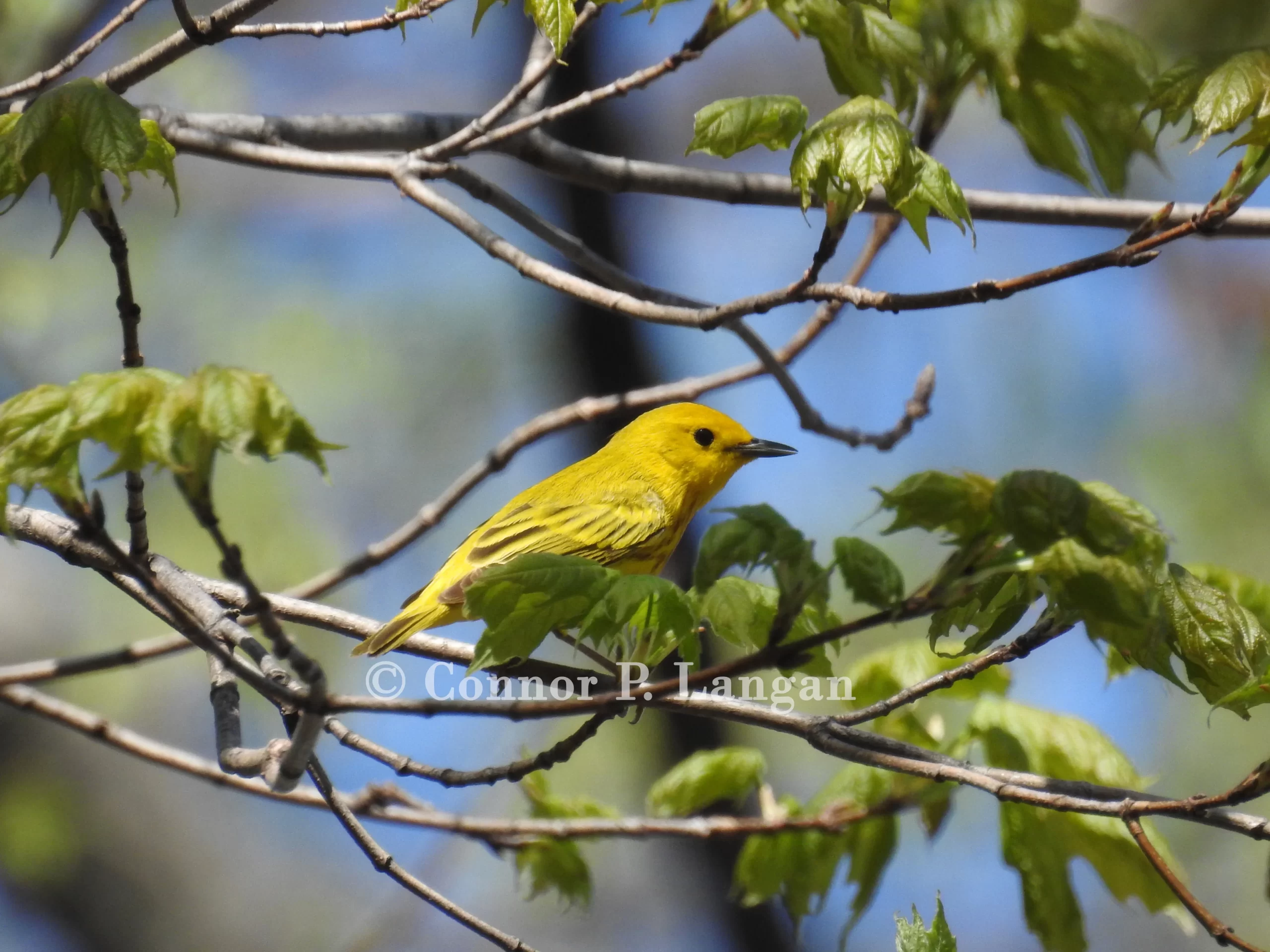A varied array of birds and birding locations exist in Illinois. Indeed, birds come in all shapes and sizes here, and one of the most eye-catching colors of Illinois birds is yellow. There is a surprising variety of yellow birds in Illinois, making identification somewhat of a challenge. Fortunately, I’ve created this guide to help Illinois birders.
Some Illinois yellow birds may show up to bird feeders, while others may be secretive and difficult to observe. No matter where you see one of these yellow beauties, this guide will help you confirm your sighting. Read on to discover an assortment of different yellow birds that may be found in the state of Illinois.
Table of Contents
Finches
Illinois has 8 species of native finches that occur somewhat regularly in the state. The state is also home to a small population of introduced European Goldfinches. Of the 8 species of native finches that regularly occur, 2 are considered to be yellow birds in Illinois.
American Goldfinch
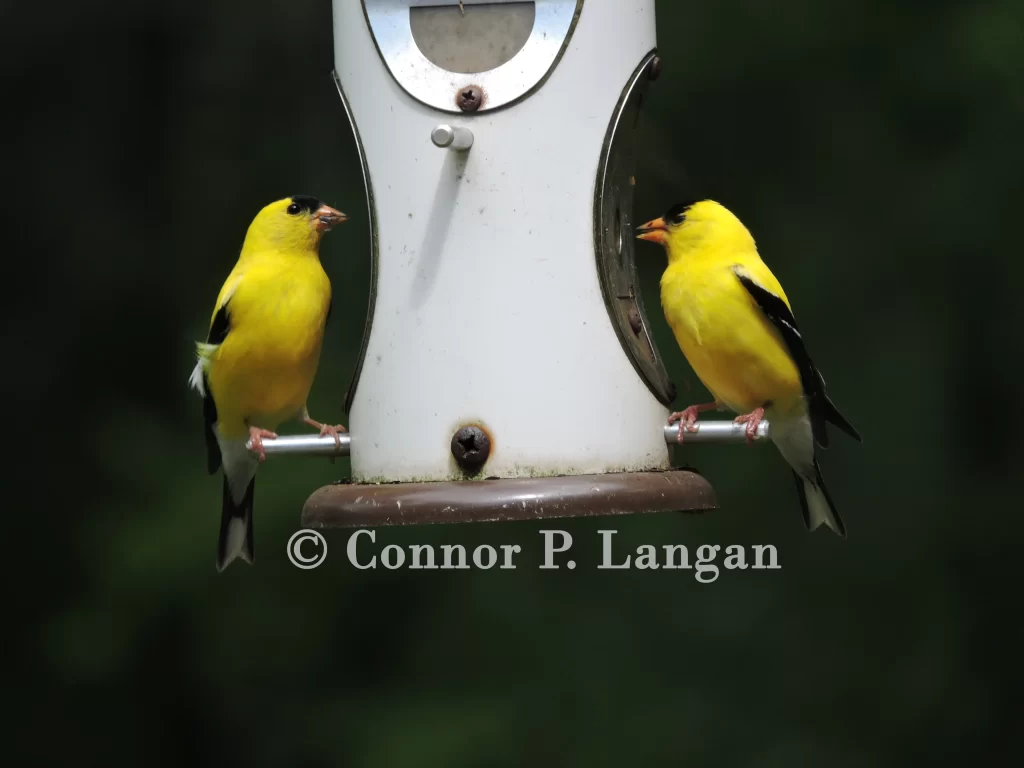
American Goldfinches are familiar sights across much of eastern North America. Indeed, these tiny yellow and black birds in Illinois are perhaps the most common visitors to bird feeders in Illinois, as they are familiar backyard birds in Illinois.
Backyards are a good place to find these yellow finches in Illinois because they enjoy eating an assortment of seeds that are commonly offered at bird feeders. Thistle, nyjer, and sunflower seeds are regularly eaten by American Goldfinches. Therefore, one needs to simply put out a bird feeder to find one of these finches.
If you aren’t able to host a bird feeder on your property, don’t worry – there are many other places to find American Goldfinches in Illinois. Parks, cemeteries, and fallow property lots are all good places to look for this species. Anywhere that has trees or weeds with seeds may attract American Goldfinches.
Goldfinches are almost always found in groups, so watch for several of these bounding birds to be associating with one another.
Evening Grosbeak
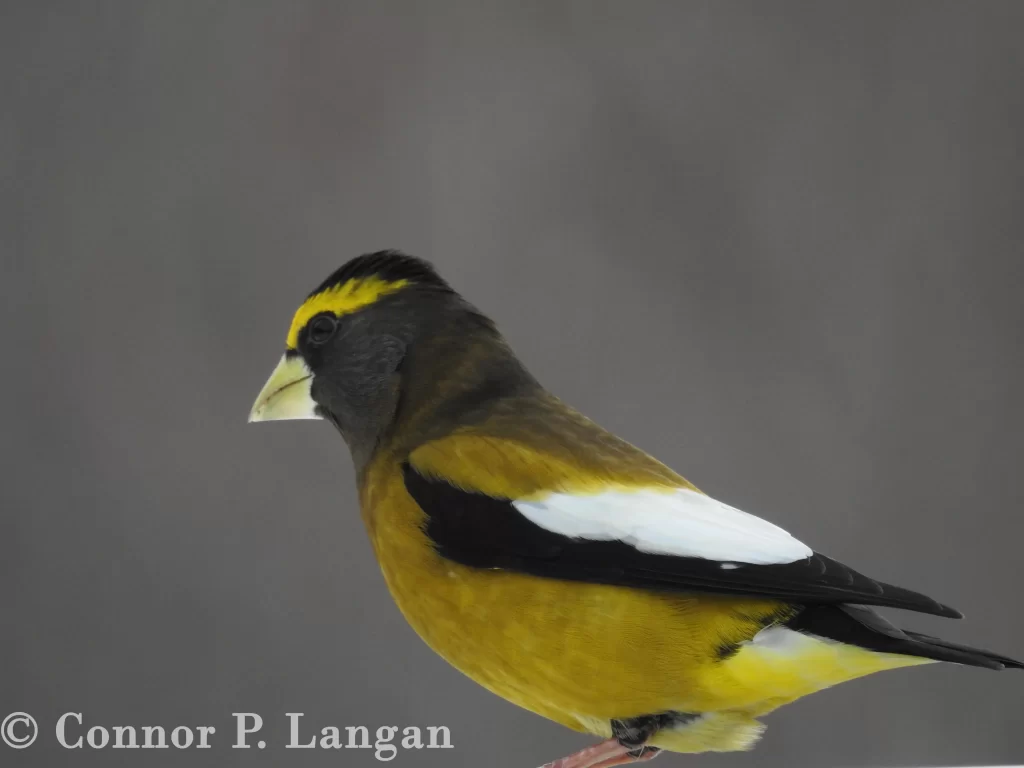
Evening Grosbeaks are rare yellow finches in Illinois despite being resident finches in neighboring Michigan. No matter, there is typically at least one observation in the state in a given year. There are some years in which there are dozens of different Evening Grosbeak reports. These occurrences are known as irruption years, and they feature influxes of these winter birds in Illinois.
Evening Grosbeaks are most commonly observed from October through May. Carefully evaluate any potential Evening Grosbeak observed from June through September, as such a sighting is likely to be a different species.
Males and females are sexually dimorphic, with females having little yellow coloration in their plumage. However, males are hard to miss as they are vibrant yellow finches in Illinois. Like many finches, Evening Grosbeaks routinely visit bird feeders. Sunflower seeds are their favorite snack, but they also enjoy an assortment of other seeds. Look for Evening Grosbeaks in parks with a variety of trees and forest edges.
Blackbirds
Illinois is home to 12 regularly occurring blackbird species, with 3 being yellow birds in Illinois.
Eastern Meadowlark
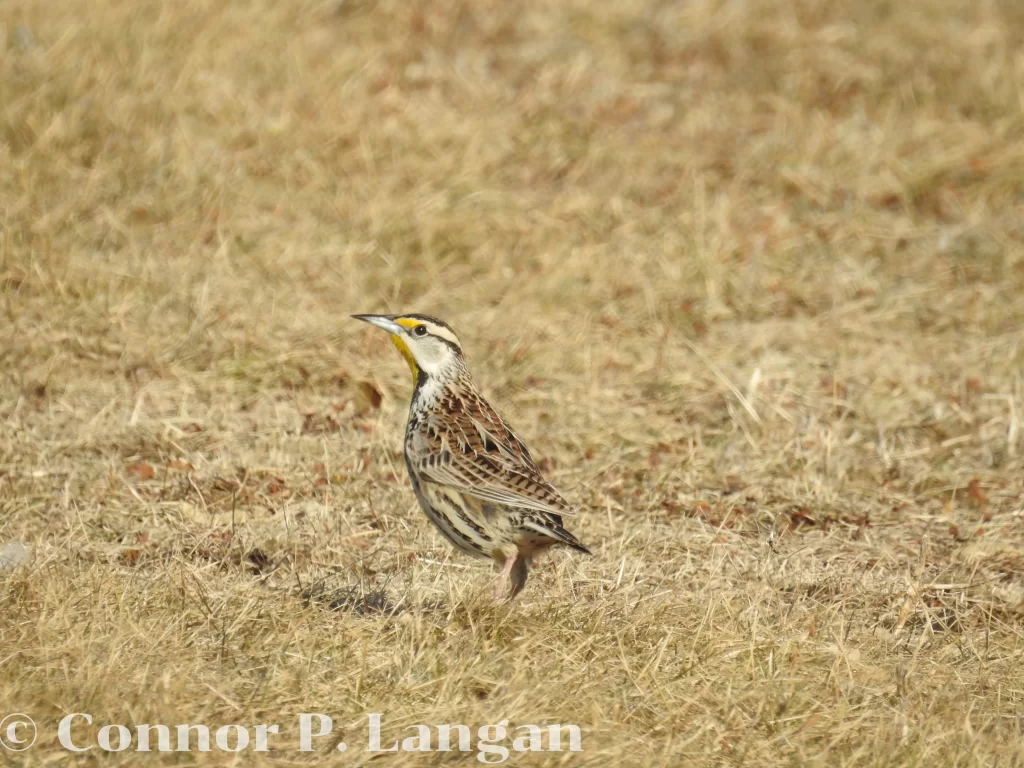
Eastern Meadowlarks are common birds in Illinois for those who live in the countryside where they fill the air with their melodic songs during spring and summer. Males and females are sexually monomorphic, and it is challenging to differentiate them from the very similar Western Meadowlark.
However, Eastern Meadowlarks are far more abundant than Western Meadowlarks in Illinois. Almost any meadowlark seen in eastern Illinois will be an Eastern Meadowlark. The best way to separate these two species is by listening to their songs.
Look for these Illinois yellow birds in a variety of open habitats including grasslands, fallow fields, pastures, and airports.
Western Meadowlark
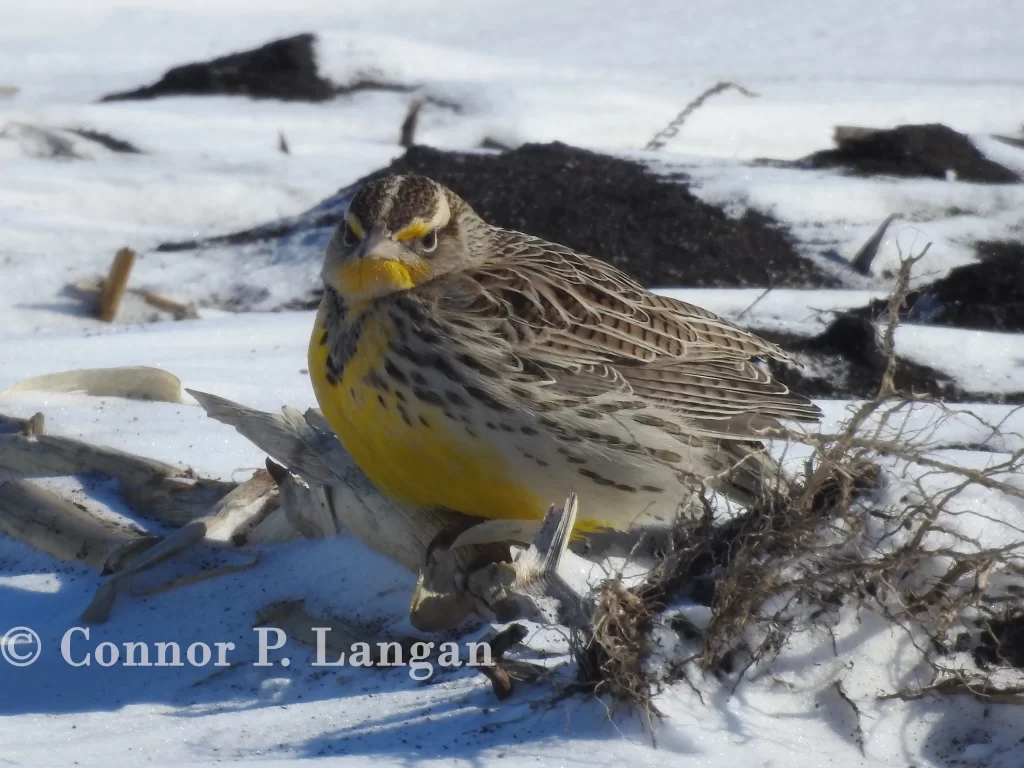
Far more uncommon than their Eastern counterparts, Western Meadowlarks are most commonly seen in the western and northern portions of the state. Eastern Meadowlarks are very similar to this species, but the voices of these two meadowlarks are readily distinguishable.
Western Meadowlarks are often located in the same areas as Eastern Meadowlarks. However, these wild birds in Illinois are more willing to feed in areas with sparse vegetation than are Eastern Meadowlarks. They are more likely to overwinter compared to Eastern Meadowlarks.
Yellow-headed Blackbird
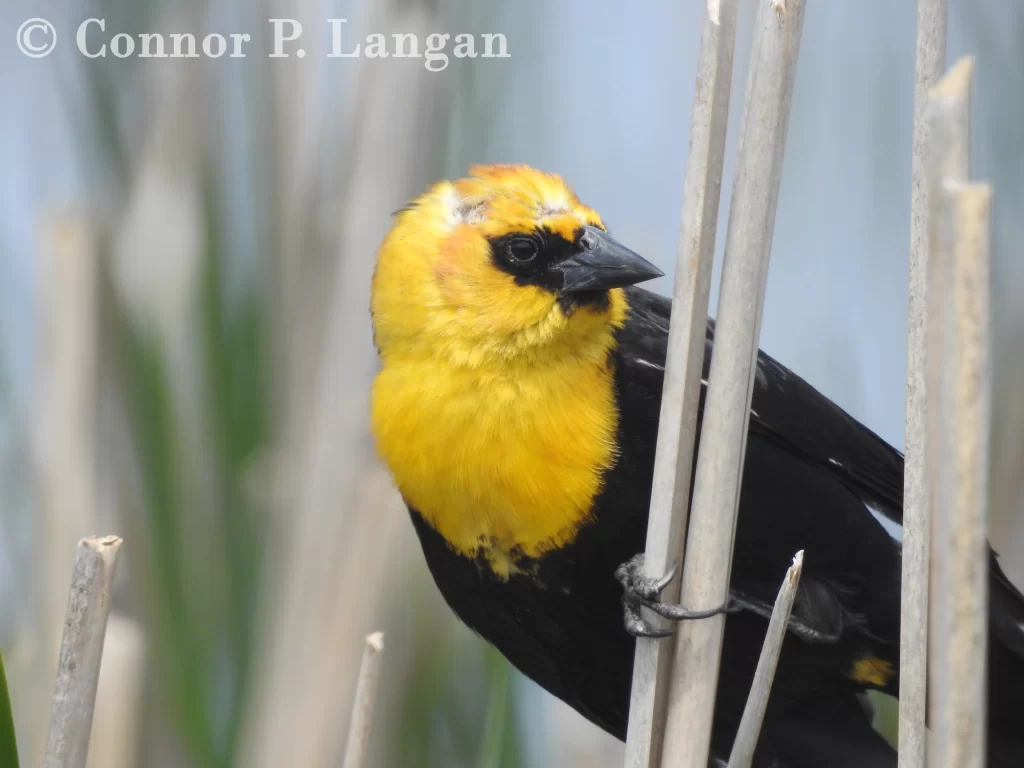
The aptly named Yellow-headed Blackbird is an uncommon sight in Illinois. They are known to breed in small numbers at a few locations in McHenry County along the Wisconsin border. Otherwise, birders can hope to try to find a Yellow-headed Blackbird in migration in other parts of the state.
Male Yellow-headed Blackbirds have bright yellow coloration on their throats and heads, while their bodies are black and white. Females are yellow as well, but the coloration is far less extensive and much duller. They are large birds in Illinois as far as songbirds go, measuring up to 10 inches long.
Look for Yellow-headed Blackbirds in marshy areas or along lakes that feature a substantial amount of cattails. Although many hope to get rid of the blackbirds that visit their feeders, must make an exception when a stunning Yellow-headed Blackbird drops by.
Vireos
Seven vireo species are regular breeders or migrants in the state of Illinois. Of those 7, 2 are considered to be yellow birds in Illinois.
Philadelphia Vireo
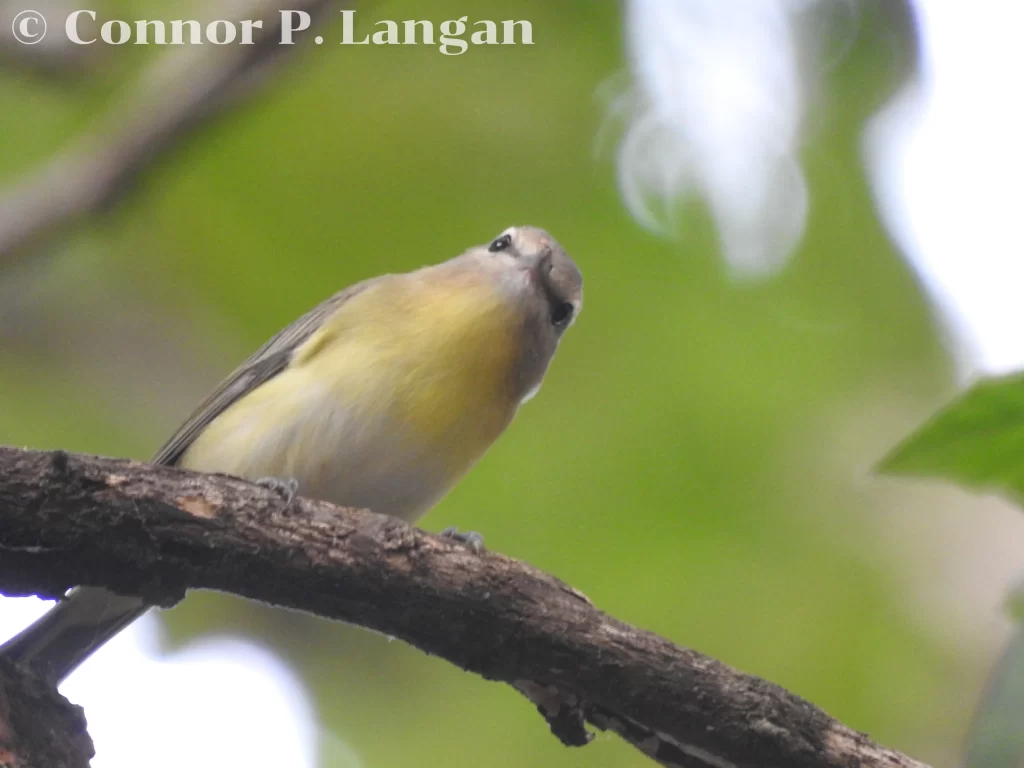
Philadelphia Vireo are regular migrants, but they do not breed in the state. Instead, they travel north to reproduce in the extensive forests of the Upper Midwest and Canada. They are not nearly as abundant as most of the other vireos that are found in Illinois. However, checking suitable habitats during migration may provide an opportunity to view this Illinois yellow bird.
The best times to look for Philadelphia Vireos are May in the spring and August and September in the fall. Look for these small birds in Illinois to stop by a variety of wooded areas on migration where they feast on insects. Forests, parks, shelterbelts, and cemeteries are good places to search.
The amount of yellow possessed by Philadelphia Vireos varies by individual bird. Birds in the fall tend to have more yellow than those in the spring.
Yellow-throated Vireo
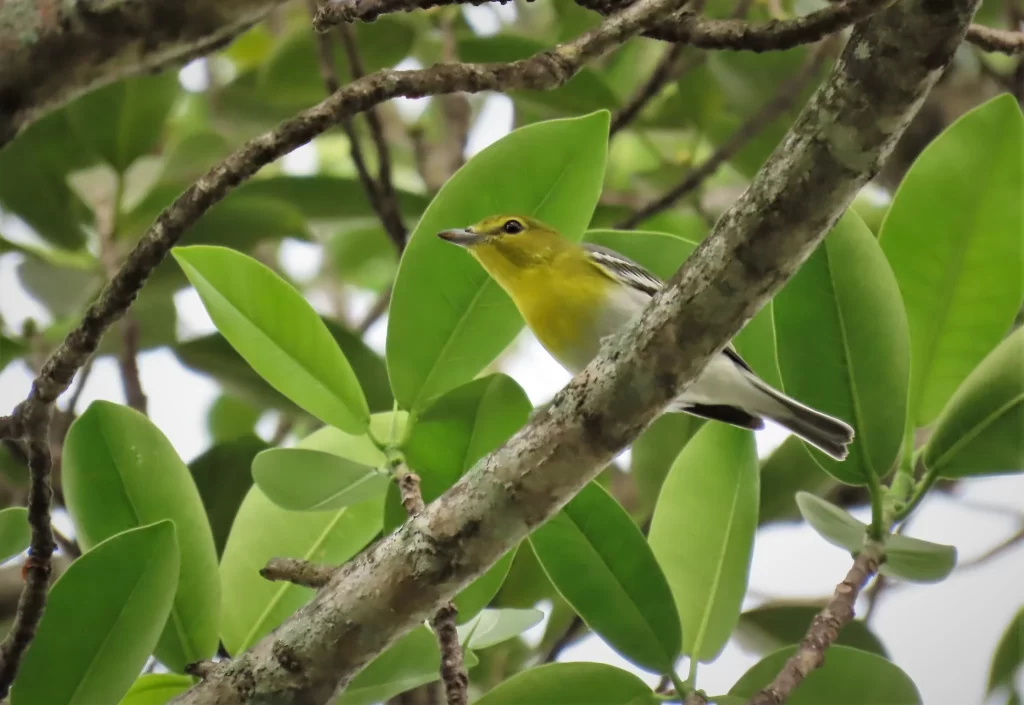
Yellow-throated Vireos are common migrants and breeders in the Midwest. Indeed, these Illinois yellow birds breed throughout the state, and they may be observed from May through September.
They do not typically spend summers in dense forests. Rather, they tend to be observed in mature forests with decent spacing between trees and fairly open understories. They are almost always found in deciduous forests.
Yellow-throated Vireos have yellow throats and spectacles. They are distinct from other vireos, but they look similar to the less common Pine Warbler. Therefore, be sure to evaluate potential Yellow-throated Vireo sightings carefully.
Warblers
Warblers are a diverse, colorful group of songbirds. Illinois has had more than 40 species visit the state, but only 35 are expected annually. More than half (18) of all of the 35 expected warblers in Illinois are yellow.
Blue-winged Warbler
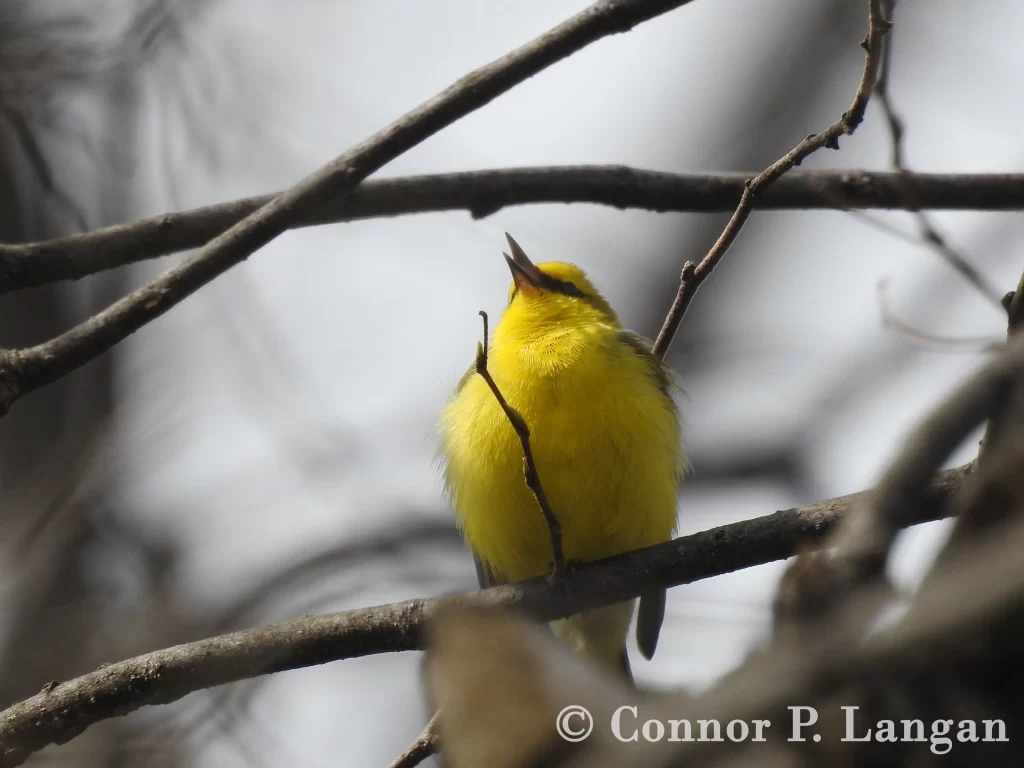
Blue-winged Warblers are little yellow birds in Illinois that are regular migrants and breeders. Breeding locations for this species can be found in central and southern Illinois.
These bright yellow, blue, and black warblers may be located in an assortment of wooded habitats in migration. However, they seek out early successional habitats during the breeding season. Therefore, forest edges and other areas with trees that are 5-10 years old may host breeding pairs of these yellow birds of Illinois.
Canada Warbler
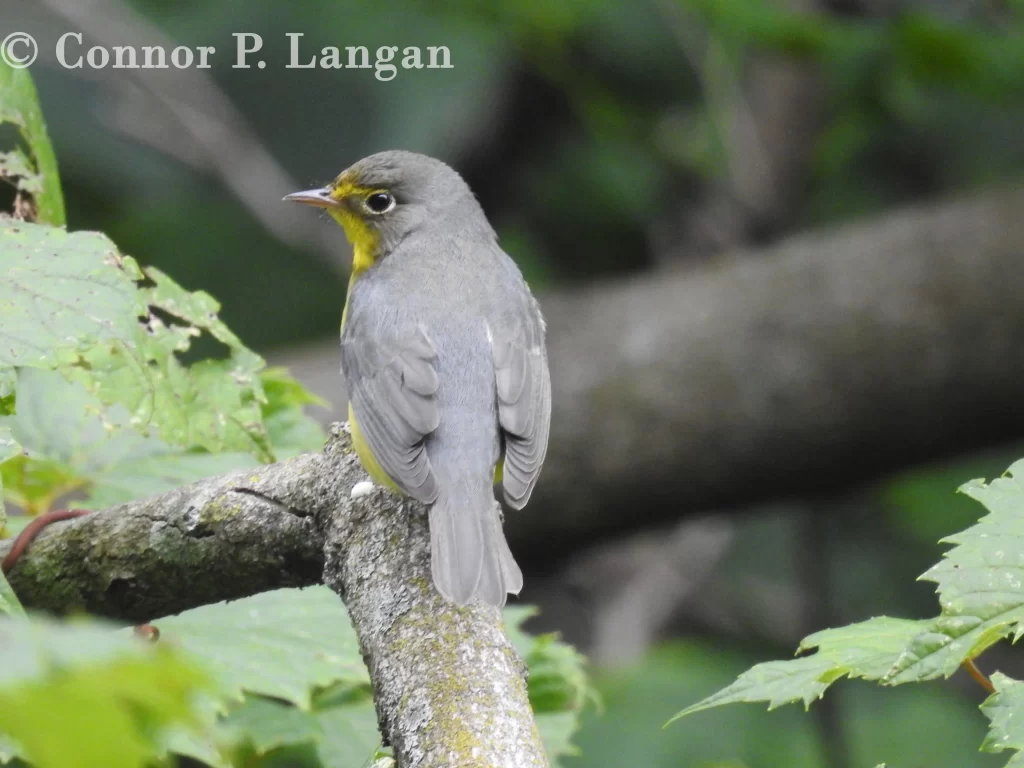
These yellow birds in Illinois do not reproduce in the state, but they are regular migrants. In fact, Canada Warblers are among the last migrants to pass through in spring, with the majority moving through after the first half of May.
Watch for them to show up in forested habitats such as parks, nature preserves, and shelterbelts. They are typically in the understory of forests where they can be seen hunting insects. These Illinois yellow birds rarely forage in the tree canopy.
Cape May Warbler
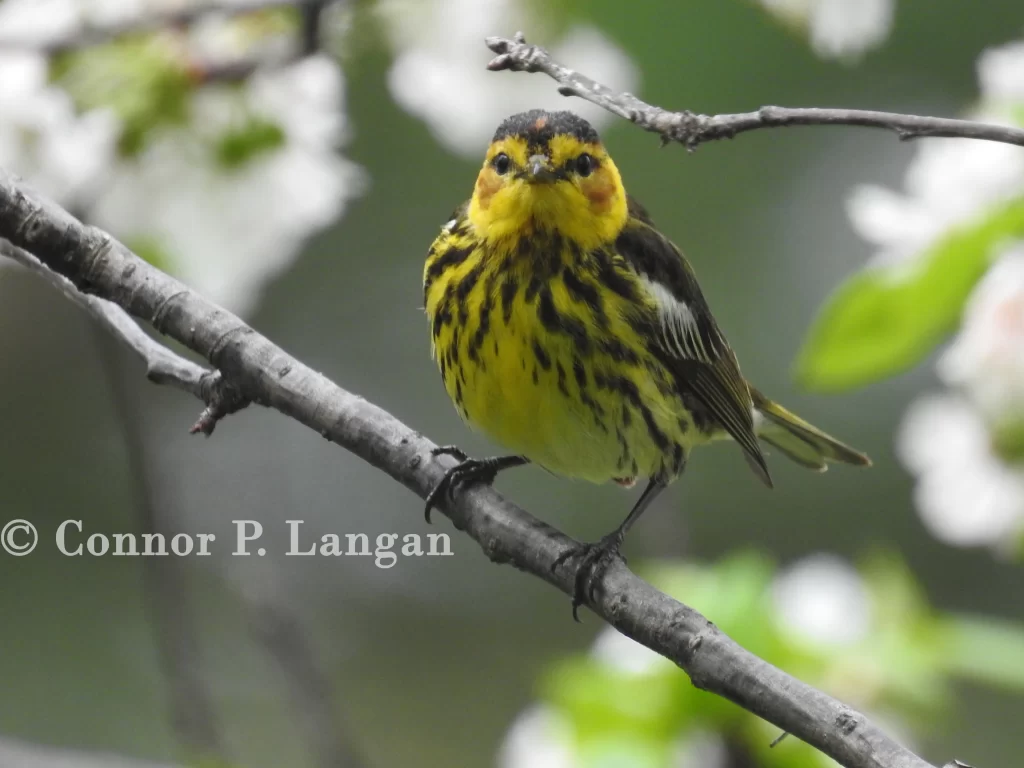
Cape May Warblers are uncommon in Illinois. These small yellow birds in Illinois are among the last warblers to pass through the state in the fall, often being sighted through mid-October.
Cape Mays are versatile in their foraging abilities. Some of these rare birds in Illinois are found in the treetops while others forage near the ground in shrubs.
Common Yellowthroat
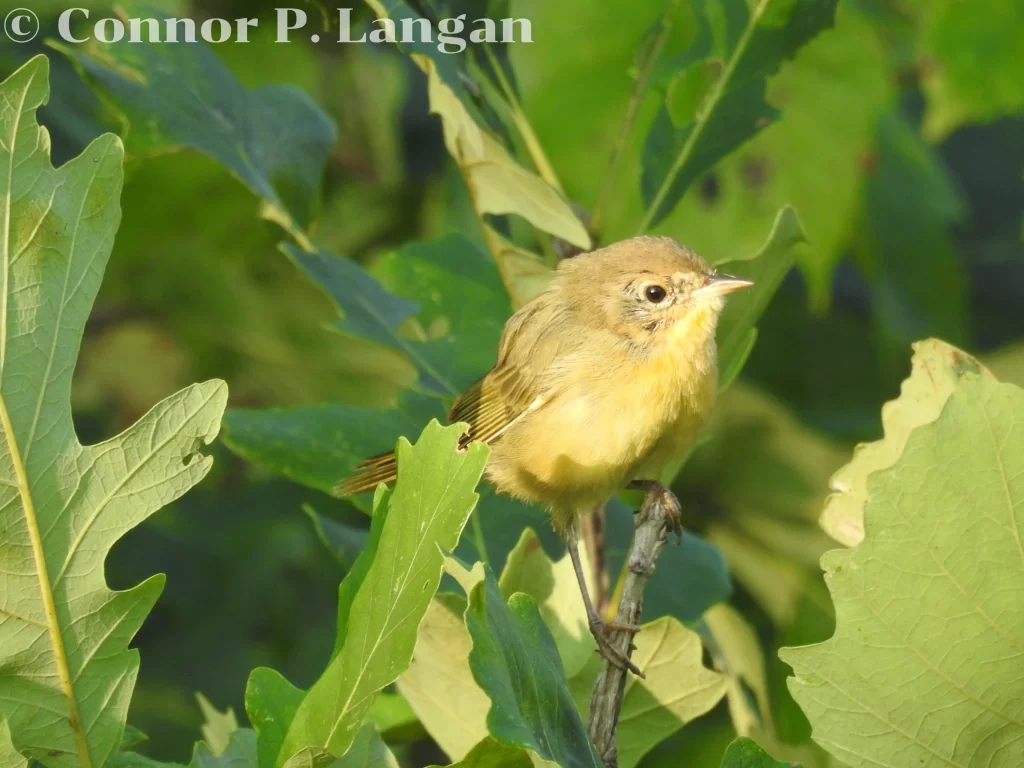
Common Yellowthroats may be the most abundant warbler that can be found during summer. They are widespread breeders and common migrants in the state.
These common birds in Illinois are not found in the treetops like most of their counterparts. Instead, look for Common Yellowthroats in marshy habitats where they are often the only yellow and black bird in Illinois to frequent such a habitat. Listen for the male’s “witchety-witchety-witchety-witch” song.
Connecticut Warbler
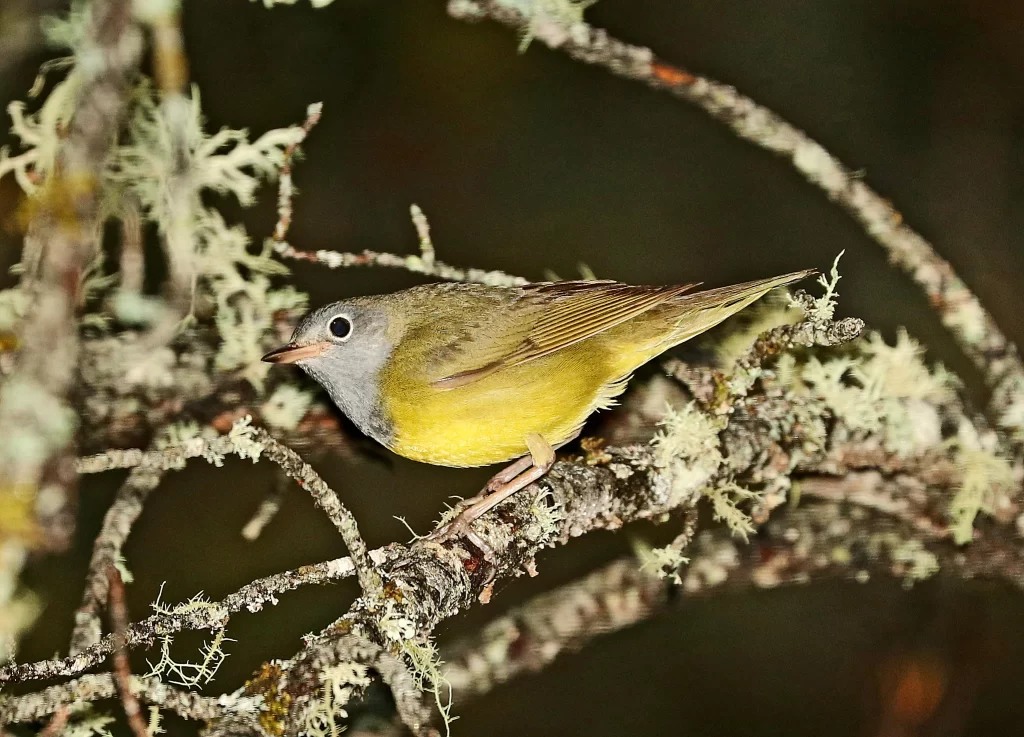
Connecticut Warblers are rare birds in Illinois, yet regular migrants. In reality, decent numbers of these birds move through the state annually. However, they are notorious for their skulking, secretive tendencies. This makes it difficult for birders to find these songbirds.
Connecticut Warblers are typically in forest understories. Here, they walk along the ground as they keep a low profile in the dense vegetation. Perhaps the best way to locate a Connecticut Warbler is by listening for its song. The best time to find them is in May, but they are occasionally found in August, September, or early October.
Hooded Warbler
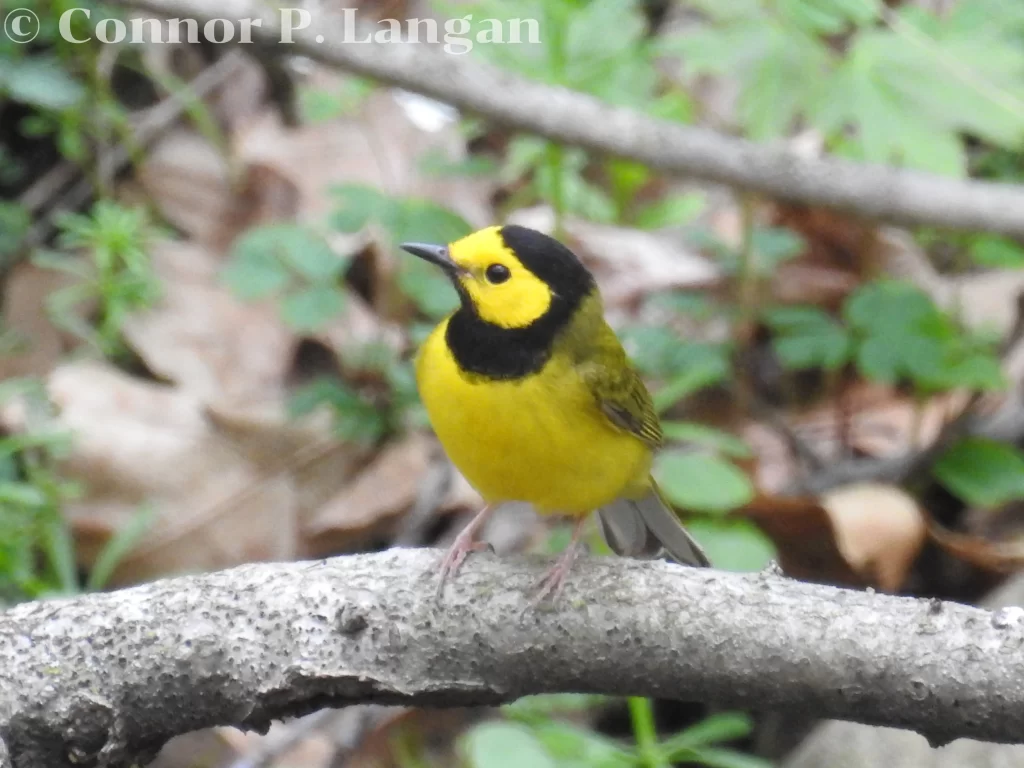
Hooded Warblers are beautiful, bright yellow and black birds in Illinois. They are seemingly becoming more regular in the state, with many reports of birds attempting to breed in the Chicago suburbs. Moreover, they have a strong breeding presence in southern Illinois where they breed in locations such as Shawnee National Forest.
Hooded Warblers are found in mature deciduous forests where they nest in the understories. These little yellow birds in Illinois may be found in a collection of wooded locations in migration.
Kentucky Warbler
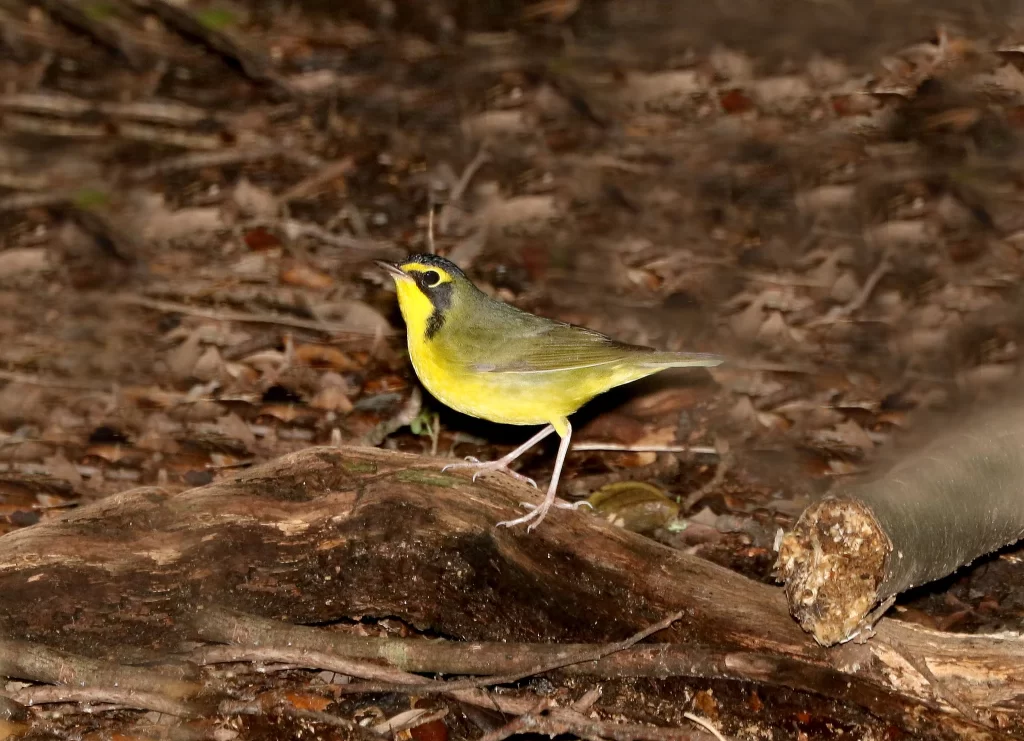
Kentucky Warblers may be observed during the summer and migration. They breed in the southern half of Illinois, and they are uncommon migrants through the northern part of the state.
Look for these black and bright yellow birds in mature forests with healthy understories. They spend the majority of their time in the understory where they can be difficult to observe. Here, they dine on insects and males sing their “cree-cree-cree” songs.
Magnolia Warbler
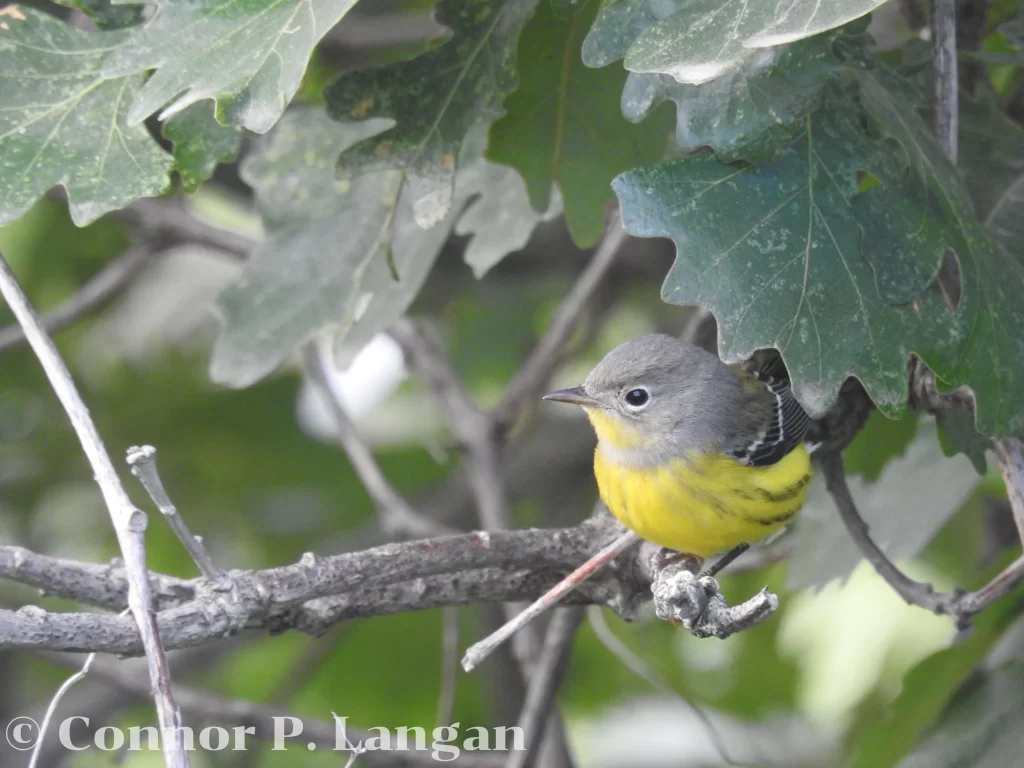
Magnolia Warblers do not breed in Illinois, but these yellow Illinois birds are common migrants in the state. The best times to view these yellow birds of Illinois are May as well as August and September.
Watch for this streaked Illinois yellow bird in parks, forests, and wooded residential neighborhoods during migration.
They do not forage as high as many other neotropical migrants. Therefore, you may get good looks as they search for insects in shrubs and young trees.
Mourning Warbler
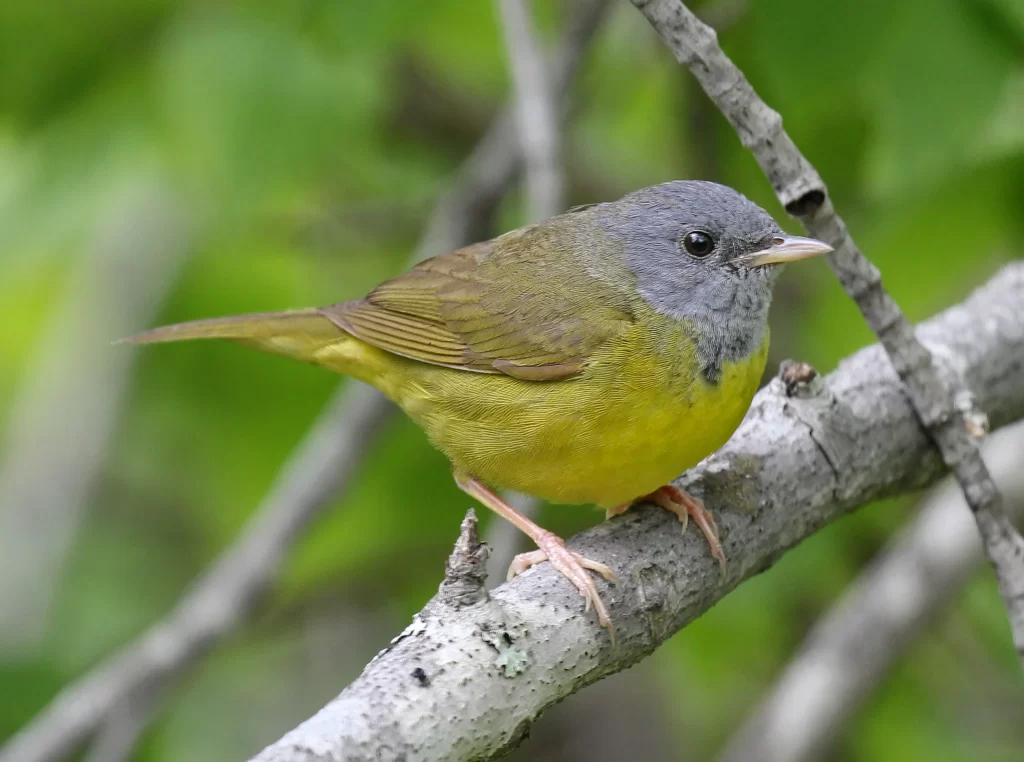
Mourning Warblers are like Connecticut Warblers in their tendency to be secretive and difficult to find. However, Mourning Warblers are far more numerous than their Connecticut counterparts. Although they don’t breed in the state, they are fairly common migrants in May as well as in August and September.
Watch for Mourning Warblers to appear in forested areas where they will occur in the understory. You may get lucky by stumbling upon one of these birds, but a better way to locate one would be to listen for its song.
Nashville Warbler
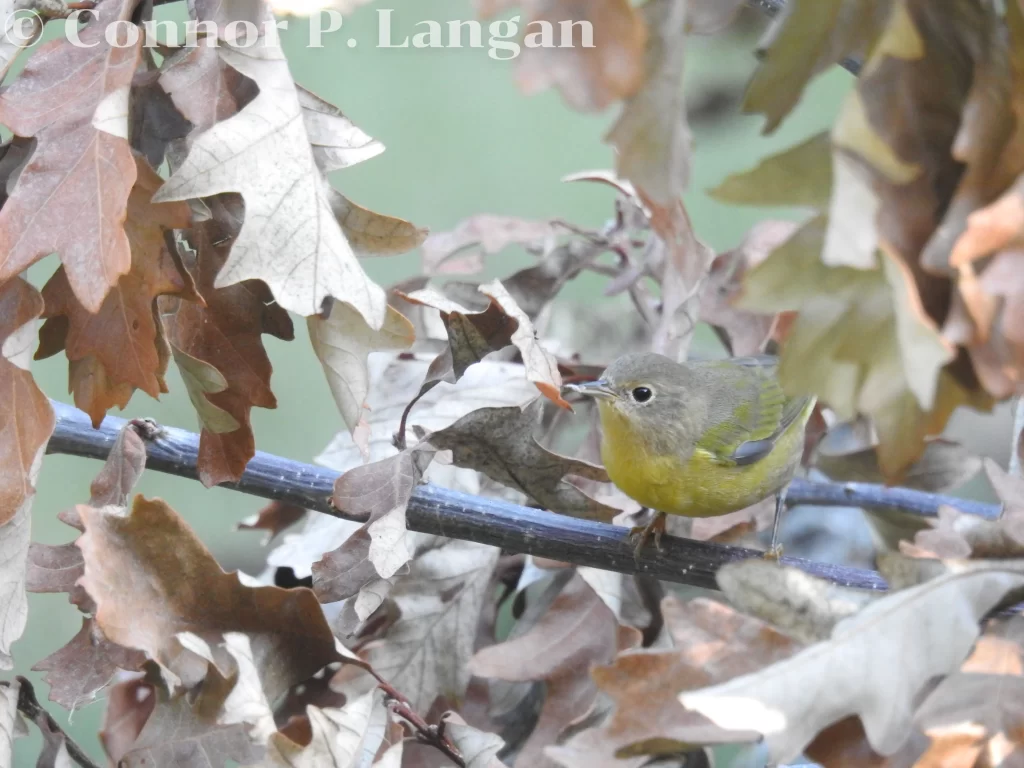
Nashville Warblers are among the most common migrants in Illinois. These birds do not breed in the state, but they occasionally turn up during the summer.
Nashvilles are more adaptable than most warbler species during migration. Indeed, they may be backyard birds in Illinois, but parks, forests, cemeteries, and prairies may also host Nashville Warblers. They are one of the last warblers in Illinois to move through in the fall, with some remaining through the first few weeks of October.
Palm Warbler
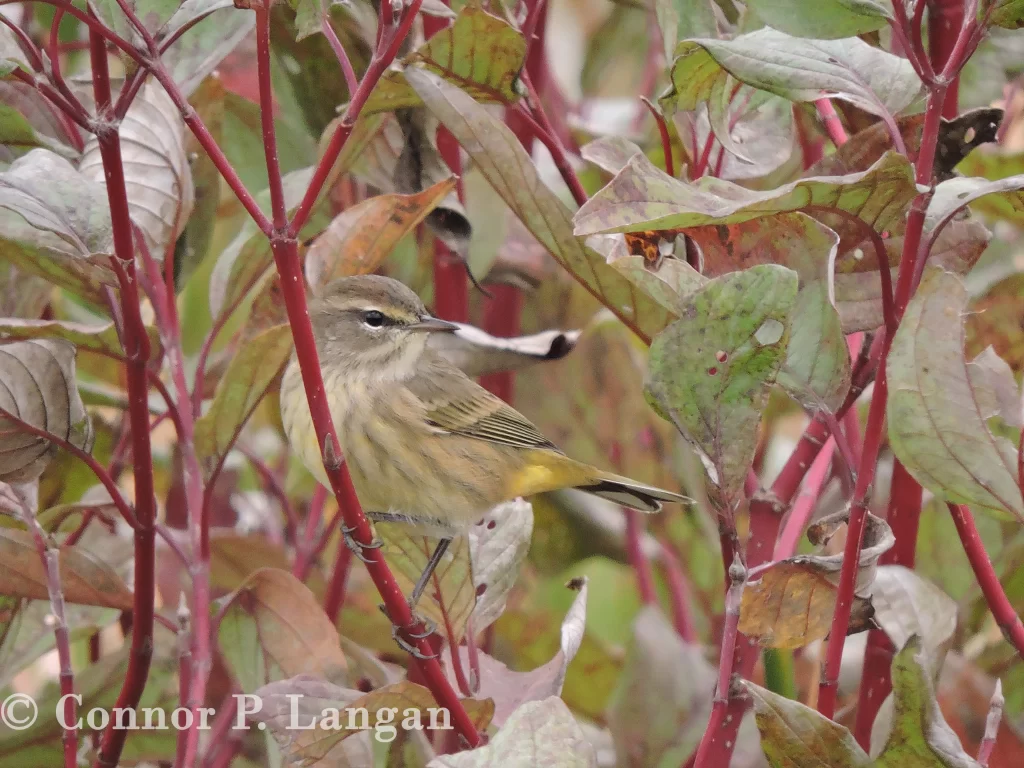
Palm Warblers are among the earliest warbler migrants in Illinois. The first birds may show up in a couple of weeks into April. Meanwhile, they may linger until nearly the end of October. These yellow birds of Illinois do not breed in the state.
Palm Warblers may show up in a wide array of habitats during migration. Birders will rarely find Palm Warblers in dense forests. Instead, look for these small birds in Illinois along forest edges and early successional habitat.
Pine Warbler
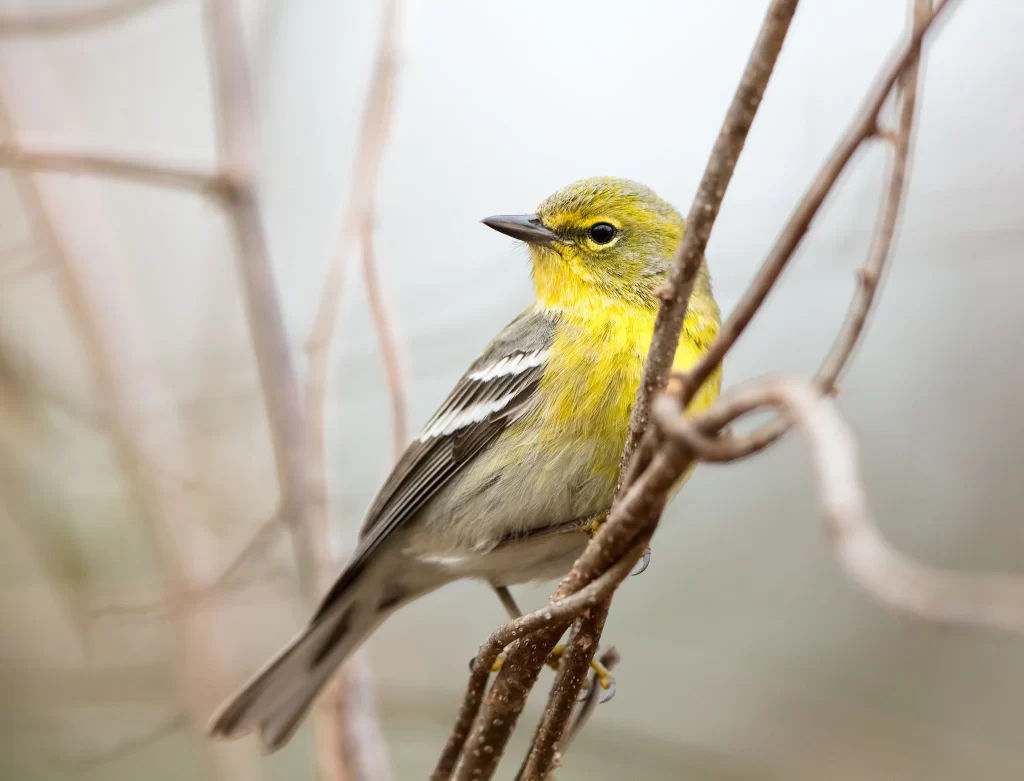
Pine Warblers are uncommon migrants and breeders. The two core areas of breeding habitat are the Chicago suburbs and the southern portion of Illinois near Shawnee National Forest.
Pine Warblers are true to their name on the breeding grounds, but they may be found in deciduous woodlands during migration in the absence of pines. They may visit bird feeders to feed on suet during migration.
Prairie Warbler
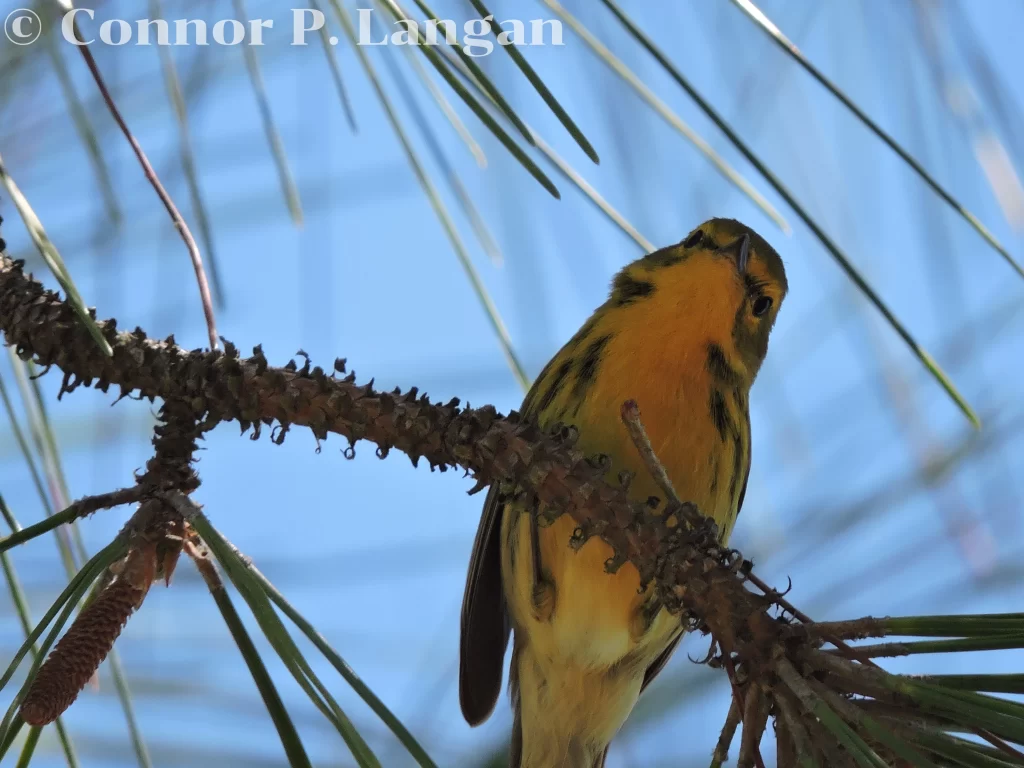
Prairie Warblers are becoming more numerous in Illinois thanks to climate change and habitat alterations within the state. Although they used to be a rare yellow bird in Illinois, they now have a stronghold in the southern portion of the state where they are regular breeders. They are rare but increasing in the north.
You may expect these birds to be found in prairies and other grassy areas, but this is not the case. Instead, search for them in early successional habitats. I suppose “Early-successional Warbler” would not have been a great name, either.
Prothonotary Warbler
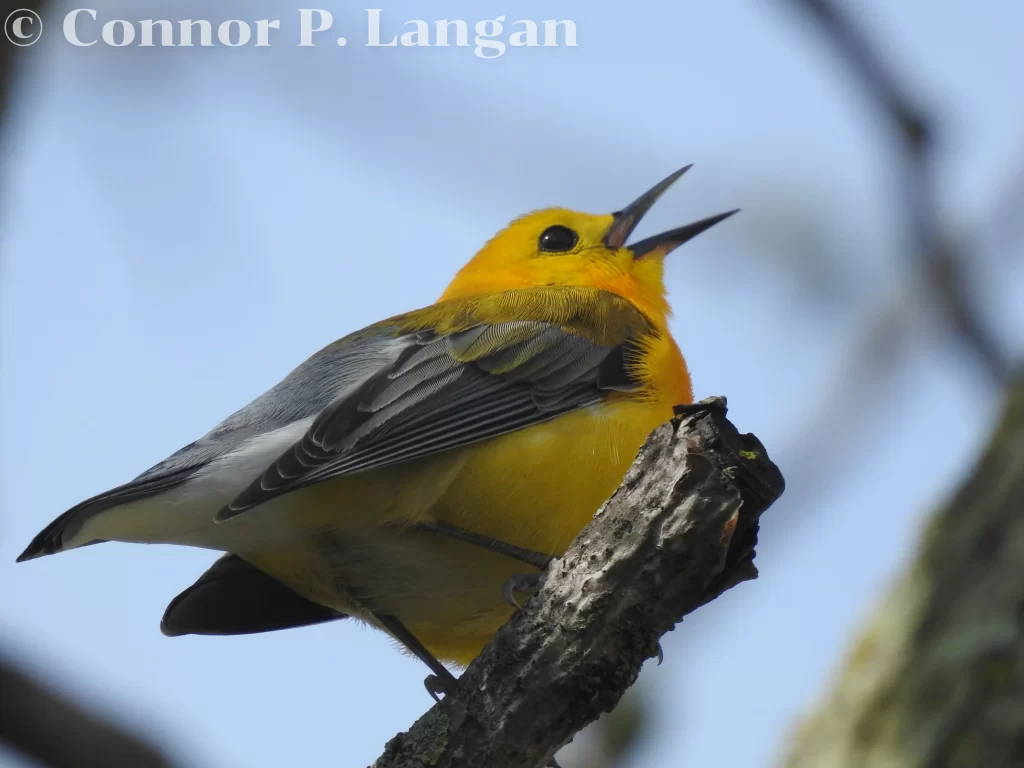
Few birds can rival the incredible beauty of a Prothonotary Warbler. These Illinois warblers have some unusual tendencies that set them apart from others. For starters, they breed in flooded forests and swamp-like habitats.
What’s more, these birds are the only warbler species known to nest in tree cavities. Finally, they are more likely to visit backyard bird feeding stations compared to most warblers. They have a special fondness for jelly. Prothonotary Warblers reproduce and migrate through the state. They may be found near forested corridors by rivers, lakes, and other aquatic systems.
Wilson’s Warbler
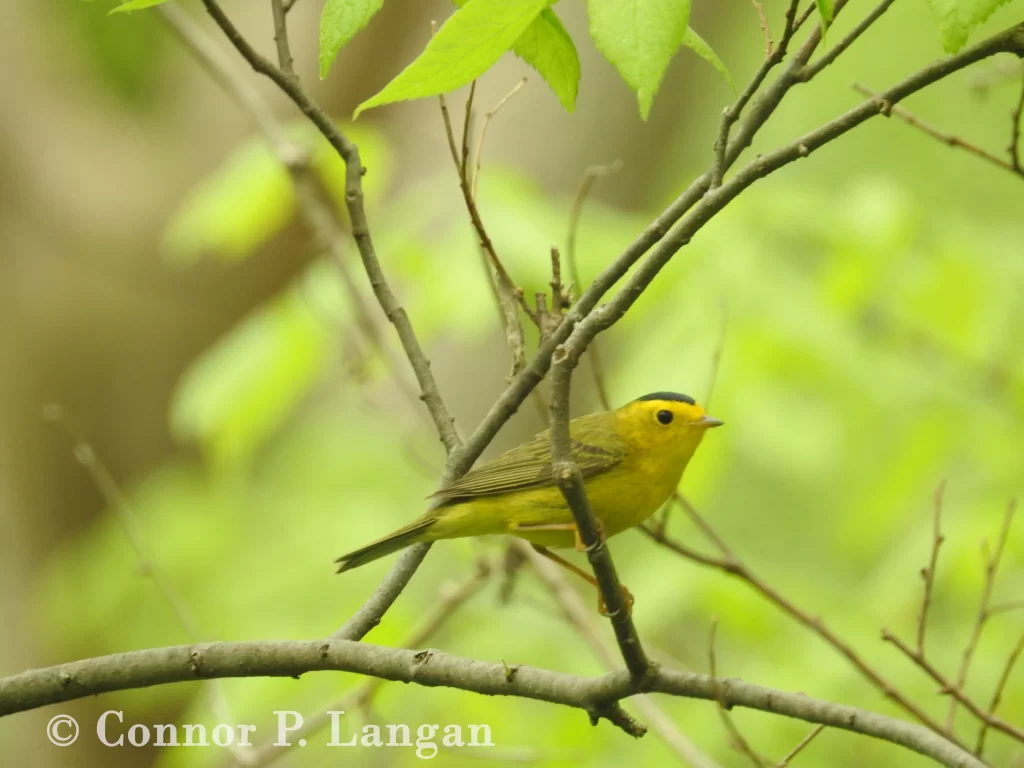
Wilson’s Warblers are common migrants throughout Illinois. These tiny birds forage lower than others, often being found in shrubs and young trees.
Their tendency to avoid foraging in the treetops means that birders may be able to get good looks at these songbirds. However, the energetic nature of Wilson’s Warblers means that they won’t be in one place for long.
Yellow Warbler
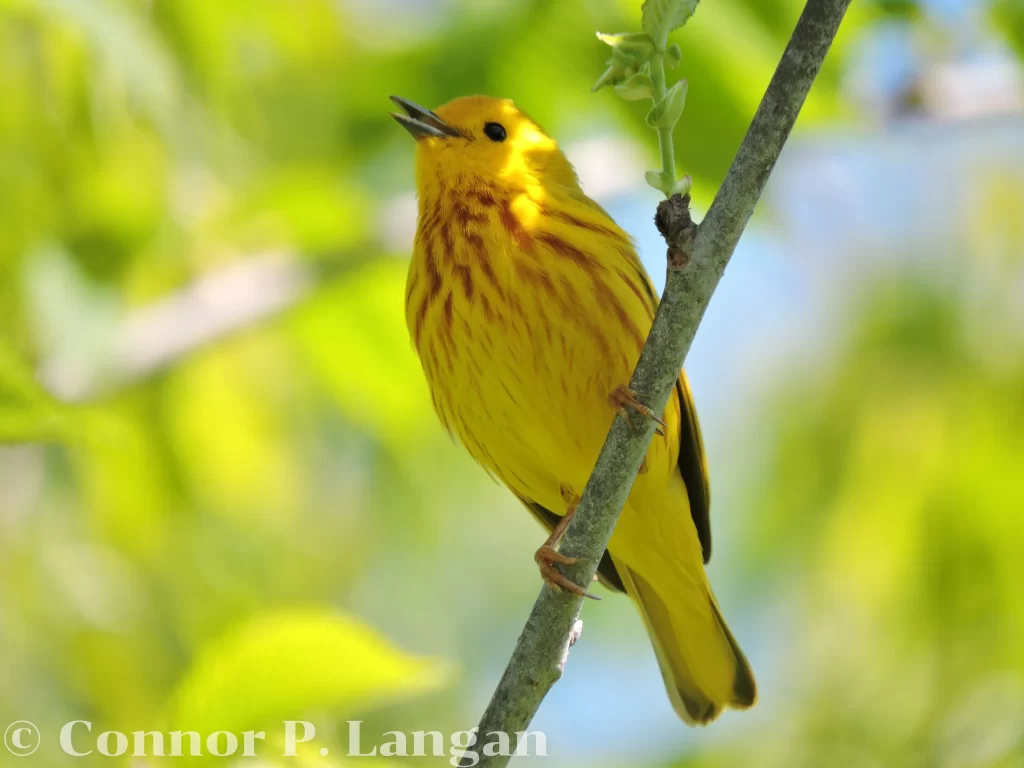
This species is in contention with the Common Yellowthroat as the most common breeding warbler in Illinois. Unlike some other Illinois yellow birds, Yellow Warblers are almost entirely yellow.
You won’t find Yellow Warblers in forests during the summer. Instead, these birds will nest in landscapes that feature tall, scattered trees and some shrubs. They are more willing to travel through forested areas during migration, as they may be found in a wide range of habitats.
Yellow-rumped Warbler
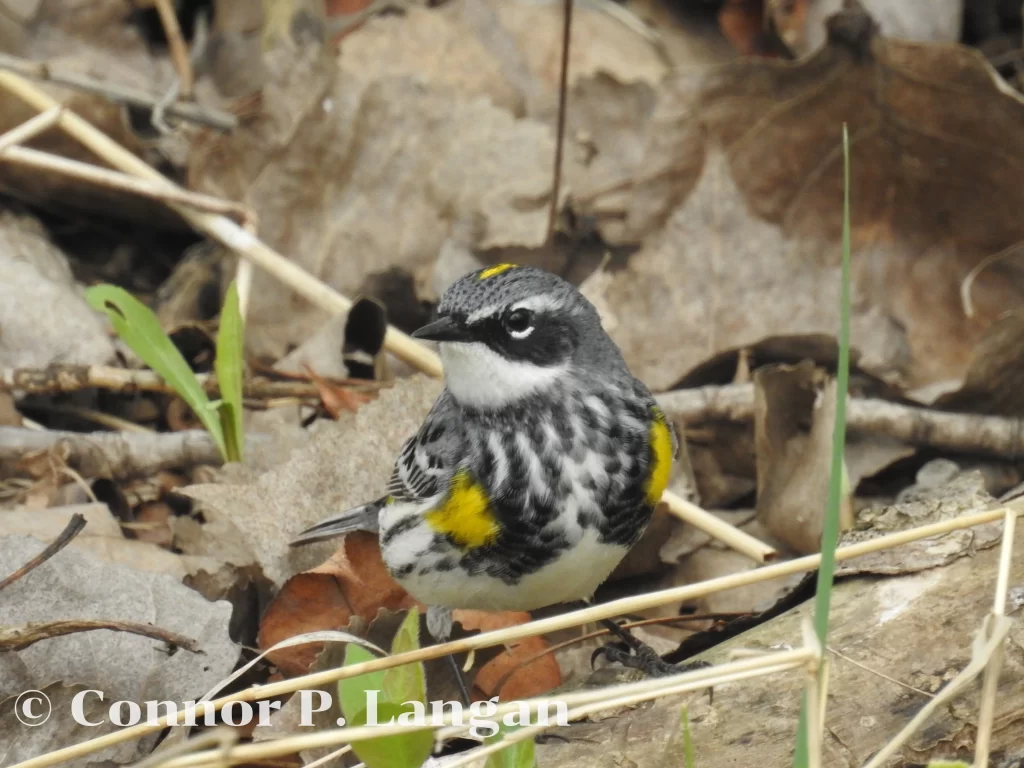
Yellow-rumped Warblers are not especially yellow, but I consider them to be a yellow bird in Illinois thanks to their namesake yellow butts. They are the most common warbler migrant in Illinois, but they do not breed in the state.
Yellow-rumps are the first warblers to arrive in the spring, with many appearing before April. Small numbers of these songbirds overwinter in Illinois every year. Watch for Yellow-rumped Warbler to frequent juniper thickets during the winter. They may be found in an immense array of habitats during migration.
Cardinals and Grosbeaks
Dickcissel
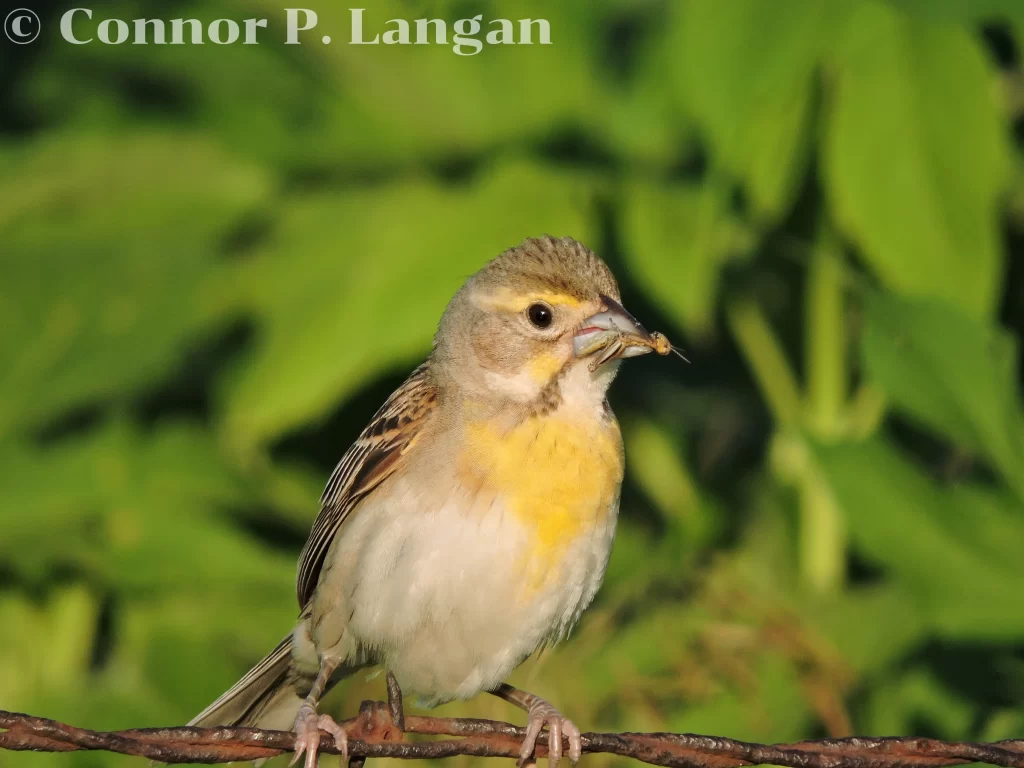
The namesake song of Dickcissels is a familiar summer song throughout rural Illinois. These small yellow birds in Illinois are common throughout the state, but their numbers tend to be strongest in Western Illinois.
Look for this by bird with a funny name in hay fields, rural ditches, pastures, and grasslands. Most Dickcissels head south for the winter by September.

